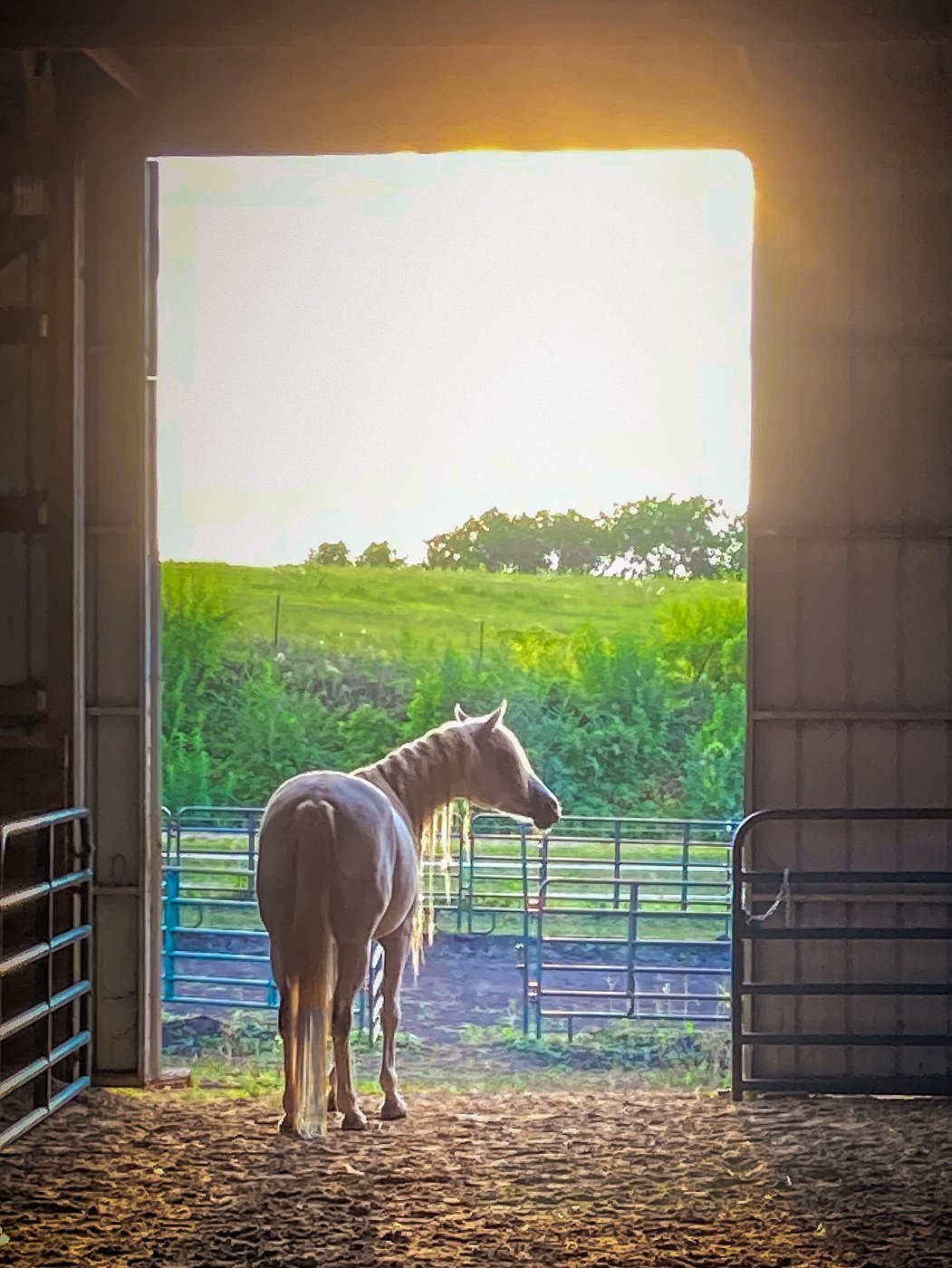
This is unintentionally long, and potentially offensive.
TLDR: I help horses and people learn to become comfortable with healthcare procedures using positive reinforcement training where traditional training has failed.
Recently I was asked to define what I do. To give my spiel. This is harder than it sounds! What is the most effective entry point? On what level of explanation should I start? It’s different talking to a prospective client, who generally has a specific problem, which is then a platform from which I can jump off with more specific information about the possibilities. A healthcare professional has the general problem of horses not “behaving,” which is usually a sub-problem of owners who are often either knowledge-poor or misinformed, or both. Sometimes, they’re just straight up overwhelmed and don’t have the resources to solve the problem on their own.
I want to describe the concepts I teach, and use none of the buzzwords commonly used in either traditional or particularly what seems to be a “New Age” view of horsemanship, because those words (like “relationship” and “leadership” and “connection”) are so subject to interpretation as to be meaningless in conversation. Don’t get me wrong: I’m happy about the industry-wide shift that’s happening, if subtly and haltingly, in an industry so fraught with dogma and traditionalism, and one that often fails to accurately take the horse’s perspective into account (which is bananas to me, because they're at least half of the equation). However, so much of this view is just an anthropomorphic, feel-good layer over the same classic problems and solutions. It’s not better than traditionalism, even if it sounds and feels more noble. It’s still a view that essentially says, “silly horse, there’s nothing to be afraid of, because I say there isn’t and your job is to trust me and do what I say because I know better than you” and calling that leadership.
So it seems the way to solve the healthcare professionals’ problem is to work with the owners. That seems simple; I talk with owners of all the horses I work with. But owners, while no longer reliant on horses for traditional work and daily life (in general, exceptions exist) and the knowledge that comes along with that, are largely still entrenched in outdated ideas and methods of horsemanship (again, exceptions exist). Consequently, they often have all the traditional “to-dos” but none of the understanding of why those things are done, and often no desire or even active discouragement to update information from the outdated traditional framework.
Unless they hit a wall. That becomes my problem to solve, and part of solving that problem is explaining how I solve that problem (ha!). Which wraps back around to the question of how I do that. So, do I talk about tools, or specific behavioral concepts and processes of behavior change? Or just the effect they have on the horse? And, what about the effect they have on the human?
For now at least, I’ve settled on a superficial explanation: I help horses and people learn to become comfortable with healthcare procedures using positive reinforcement training.
Superficial because I think there’s a difference between what I intend to convey, and what the client actually internalizes, and I think this happens on so many different levels. By far the deeper changes seem to happen, eventually, in the people I work with more than the horses. But to say that outright makes people uncomfortable. To talk explicitly about that shift feels arrogant and threatening, as though people aren’t enough as they are. They either see themselves as already empathetic (or a good leader, or as having a good connection with their horse, etc.), or they have strong beliefs about what a horse should do for them, and/or how the human should get things done. Sometimes there’s an opening in the desperation people feel when they’ve “tried everything” and none of it has worked, but even so, just as often they’re still not ready for the mindset shift this work can produce, and sometimes requires.
But it’s one of the most beneficial features of the approach; nothing is done except by human minds and hands. In order for things to change, humans must change, and that has an effect that ripples outward into the world. Ultimately, that is how I can help.
